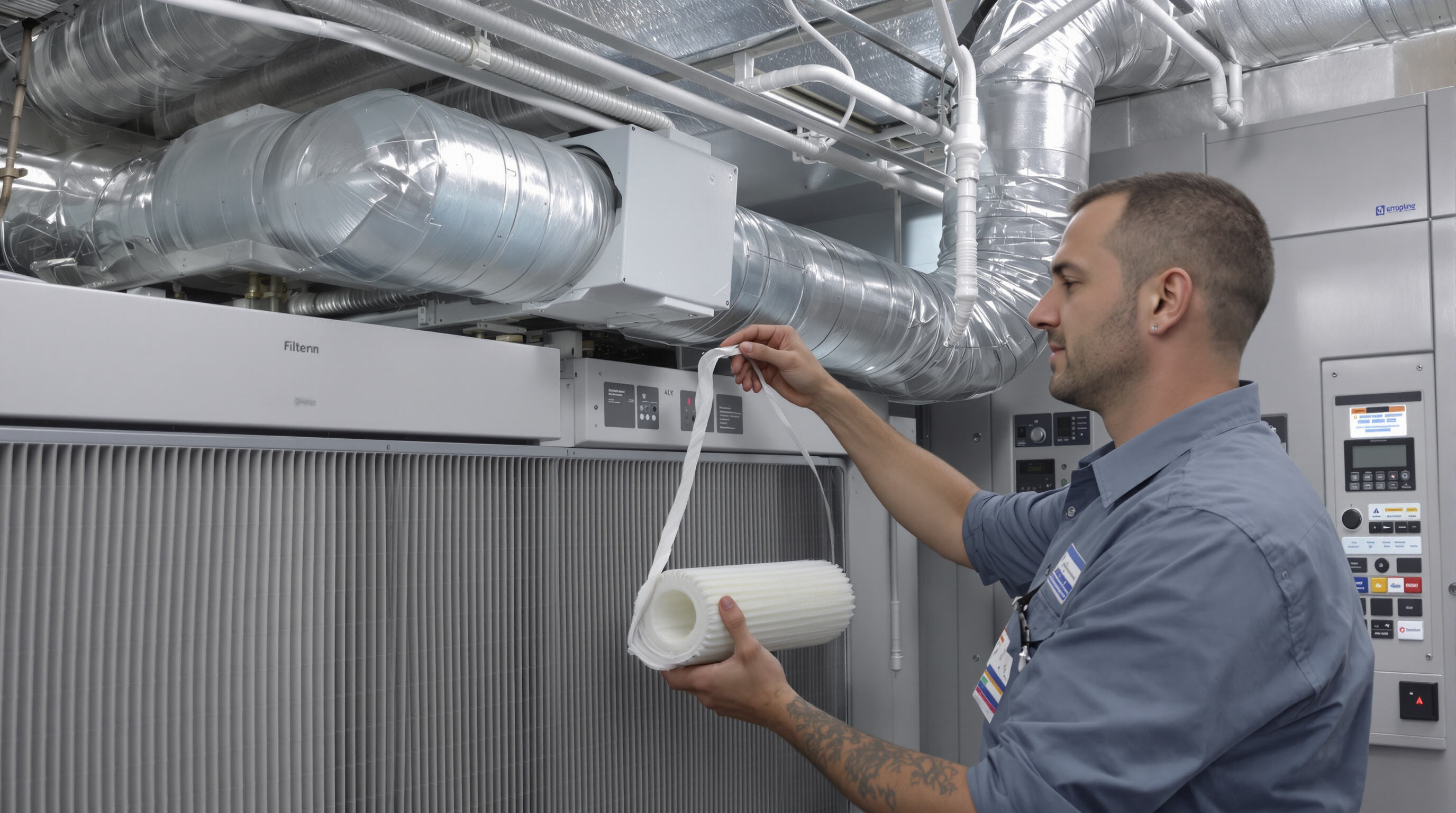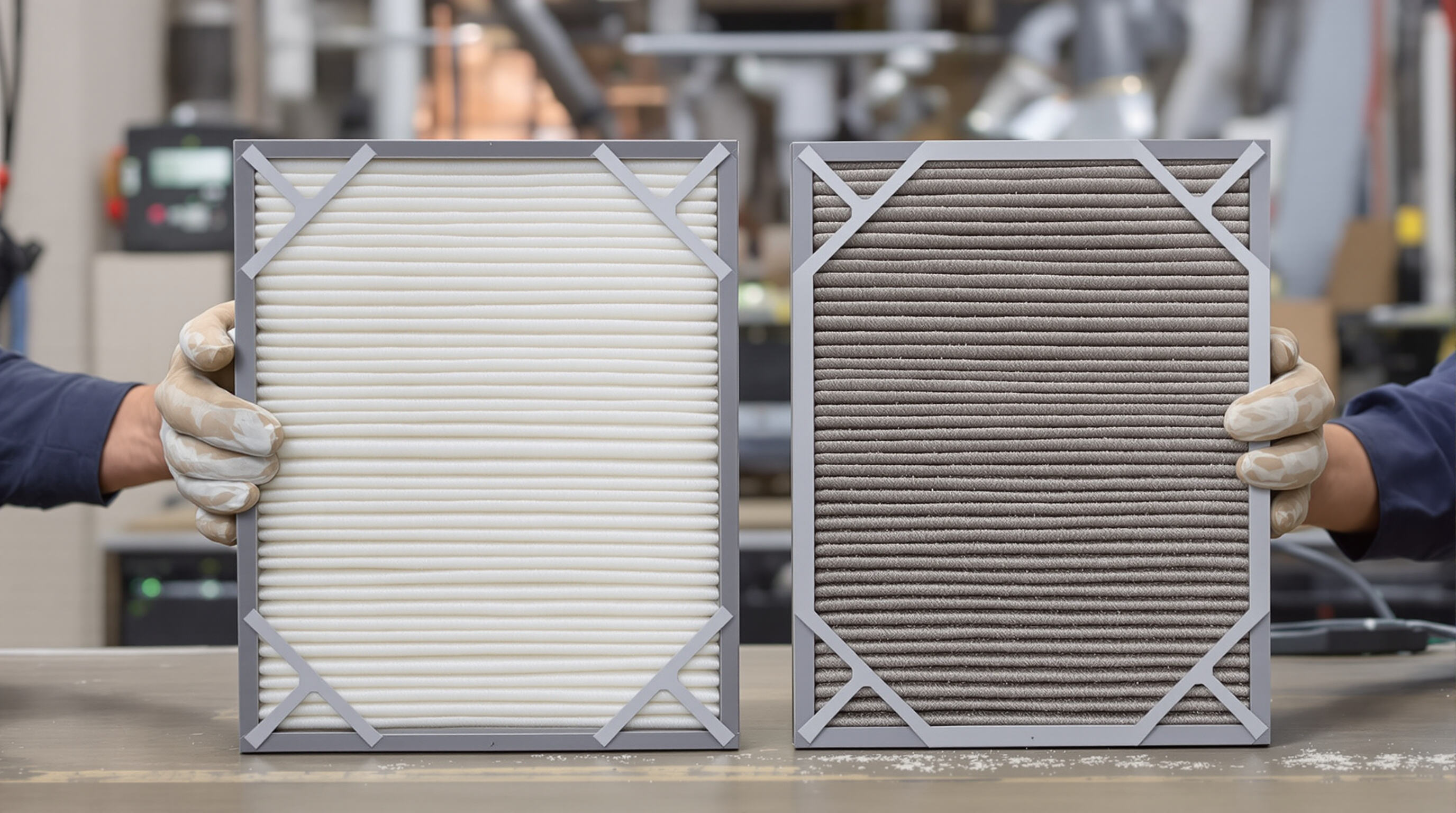Air filters in HVAC systems are pretty effective at trapping stuff out of the air we breathe. They catch around 90% of common contaminants like dust, pollen, and those nasty VOCs before pushing cleaned air back into our spaces. According to ASHRAE standards from 2023, modern filters can grab particles down to just 1 micron in size, which means they stop a lot of the stuff that makes breathing difficult for people with allergies or asthma issues. The newer pleated filter designs actually work better because they have more surface area. This extra space lets them hold onto more dust and debris while still allowing air to flow through reasonably well, so buildings stay comfortable without overworking the system.
The Minimum Efficiency Reporting Value (MERV) scale (1-16) measures filter efficiency in capturing airborne particles:
| MERV Rating | Particle Capture Efficiency | Typical Applications |
|---|---|---|
| 8-10 | 70% of 3-10 μm particles | Residential buildings |
| 13-16 | 85-95% of 0.3-1 μm particles | Hospitals, labs |
In commercial environments, MERV 13+ filters reduce allergy-inducing particulates by 60% compared to basic MERV 6 filters (IAQ Council 2023), significantly improving indoor air quality.
Modern air filter cartridges achieve 95% PM1 (particulate matter •1 μm) capture using electrostatic media and gradient density layering. Third-party testing under ASHRAE 52.2 standards confirms that high-efficiency filters maintain •¥99% efficiency after six months of use under typical commercial HVAC loads.
Facilities using MERV 14 cartridges report 28% fewer occupant respiratory complaints (BOMA 2023 IAQ Study). Best practices include quarterly filter replacements and real-time airflow monitoring to balance filtration effectiveness with ventilation needs. Schools adopting ISO 16890-compliant filtration systems have seen a 19% reduction in student absenteeism linked to air quality issues.

The air filter cartridge plays a big role in how well an HVAC system works because it controls how much resistance there is to airflow. When these filters are clean, air moves freely through the system which means the blower motor doesn't have to work as hard and overall energy usage drops. Think about it this way: when everything runs smoothly, the HVAC just needs a fraction of what it normally would to keep rooms at comfortable temperatures, particularly those hot summer days or cold winter nights when we really rely on our heating and cooling. On the flip side though, dirty filters create all sorts of problems. The system ends up running longer than necessary since it can't push enough air through, and this actually makes energy bills go up by around 15 percent based on what various industry reports have shown over time.
Clogged air filter cartridges increase static pressure, causing HVAC components to overwork. This leads to higher fan energy use and reduced heat exchange efficiency. Compressors run longer to meet thermostat demands, accelerating mechanical wear and increasing kilowatt-hour consumption. The cumulative effect shortens equipment lifespan and raises operational costs.
What happens when air movement gets blocked? The whole system starts acting differently. Filters that are about 80% full usually cut down on airflow somewhere around 20%. This makes the fans work harder to keep things ventilated properly. There's something called fan affinity laws at play here too. Basically, as pressure goes up, the energy needed doesn't just go up proportionally it jumps way more than expected. Take a look at what happens when airflow drops by half. Suddenly, those fans need three times as much power to do their job. That kind of jump in energy use creates some serious problems for efficiency and costs.
Advanced air filter cartridges with engineered media reduce static pressure while maintaining high particle capture. These filters deliver MERV 13-16 performance with an initial resistance below 0.5 inches w.g.-20-30% lower than standard filters. The reduced drag supports consistent airflow, enabling facilities to achieve 8-12% lower HVAC energy consumption.
Getting good filtration means finding that sweet spot between catching particles and what the system can actually handle. High MERV filters above 13 are great for grabbing those tiny sub-micron particles, but let's face it, many older HVAC systems just can't push enough air through them. Before making any upgrades, engineers need to check those static pressure numbers first. Pleated media might be worth looking at since these designs pack in about 150% more surface area while keeping resistance down compared to standard options. Another approach is setting up multiple stages of filtration throughout the system. We've seen this work well in facilities where maintaining airflow is critical but particle control remains a top priority.
Optimized air filter cartridges reduce costs by improving energy efficiency and minimizing mechanical stress. High-efficiency filters capture more contaminants, extending service intervals by 30-50% and cutting labor and material expenses. Reduced system strain also lowers the risk of costly breakdowns, which can exceed $5,000 per incident in commercial operations.
Keeping HVAC air filter cartridges clean and properly maintained makes all the difference for system efficiency. When filters are clean, they create about a quarter of the airflow resistance compared to dirty ones, which means compressors and fans don't have to work as hard. Many facility managers notice around 10 to 15 percent savings on their monthly energy costs once they start following regular maintenance routines. The best results come from using high quality MERV 13 to 16 filters and replacing them based on actual usage rather than fixed time intervals. This approach not only saves money but also extends equipment lifespan across commercial buildings.
A year-long study of three Class A office buildings showed measurable returns from upgrading to high-capacity cartridge systems:
| Metric | Before Upgrade | After Upgrade | Improvement |
|---|---|---|---|
| Avg. Energy Cost | $28,500/month | $24,100/month | -15.4% |
| Filter Replacements | 6/year | 3/year | -50% |
| HVAC Service Calls | 17/year | 9/year | -47% |
The combined savings resulted in a 7-month payback period, not including added benefits from extended equipment life and improved occupant health.
Upgrading to high-efficiency air filter cartridges requires careful assessment of HVAC system limitations. While these filters improve air quality, they must align with airflow capacity, static pressure tolerances, and fan motor specifications to avoid performance issues.
Not all HVAC systems support MERV 13+ filters without modification. Units designed for MERV 8-11 filters may experience 12-25% airflow reduction when upgraded, increasing fan energy use by up to 15% (ASHRAE 2024). A pre-upgrade assessment should verify:
Modern retrofits emphasize low-pressure drop designs to accommodate high-efficiency filtration. Key comparisons include:
| Specification | Standard Filters | High-Efficiency Filters |
|---|---|---|
| Avg. Pressure Drop | 0.25-0.35 in. H2O | 0.4-0.6 in. H2O |
| Airflow Capacity | 1,200-1,500 CFM | 800-1,000 CFM |
| Recommended Duct Size | 10"-14" | 14"-18" |
Select pleated cartridges with 40-60% greater surface area to maintain airflow while ensuring high particle capture.
HVAC systems equipped with IoT sensors can actually change their fan speed according to real time pressure drops. This smart adjustment cuts down on wasted energy somewhere around 18 to 22 percent compared to older fixed speed models, especially when those high MERV filters are installed. The systems also come with some pretty clever software that figures out when filters need replacing. These algorithms look at how much dirt builds up over time, what kind of seasons we're going through, plus past maintenance records. What this does is match the actual filtering power to what the system can handle, which keeps everything running smoothly while saving money in the long run.

Environmental conditions significantly affect air filter cartridge lifespan. In high-particulate environments like manufacturing facilities, filters load 30-40% faster than in standard office settings. Monitoring dust accumulation helps prevent premature saturation and maintains consistent filtration performance.
| Environment Type | Avg. Lifespan | Dust Capacity Impact |
|---|---|---|
| Standard Office | 6-9 months | Baseline |
| High-Humidity | 4-6 months | -25% capacity |
| Industrial | 2-4 months | +50% loading rate |
Replace cartridges according to manufacturer guidelines: every 90 days in most commercial settings, or every 45-60 days in high-activity environments. Delayed replacements can increase airflow resistance by up to 150%, causing fans to consume 15-20% more energy (Facilities Management Journal). Usage-based schedules outperform fixed intervals by aligning maintenance with actual system demands.
Conduct monthly visual inspections for damage and use compressed air pulse-cleaning during operation where applicable. Proper care extends filter life by 30% and protects downstream components like coils and blowers. Facilities with documented maintenance protocols experience 22% fewer emergency HVAC repairs than those using reactive approaches.
Modern HVAC systems now come equipped with differential pressure sensors that keep track of how loaded filters get in real time. When the resistance goes beyond what's normal, these sensors send out warnings so maintenance teams know something needs attention. Studies show this setup can cut down on those surprise breakdowns by about 40%, which is a big deal for facility managers. Plus, it helps save energy because filters aren't replaced too soon or too late. The data collected actually gets fed into some pretty smart predictive models. These models help companies avoid spending money on unnecessary filter replacements and emergency repairs, trimming operational expenses by around 18% over time according to industry reports.
Air filter cartridges are vital in HVAC systems as they trap airborne contaminants such as dust, pollen, and VOCs, providing cleaner air and maintaining indoor air quality.
MERV ratings measure the efficiency of air filters in capturing particles. Higher MERV ratings indicate better filtration, with MERV 13-16 filters capturing 85-95% of 0.3-1 μm particles.
Air filters should be replaced every 90 days in standard commercial settings, or every 45-60 days in high-particulate or high-activity environments to maintain optimal performance.
 Hot News
Hot News2025-01-17
2025-01-13
2025-01-08
2024-12-27
2024-12-23
2024-12-16